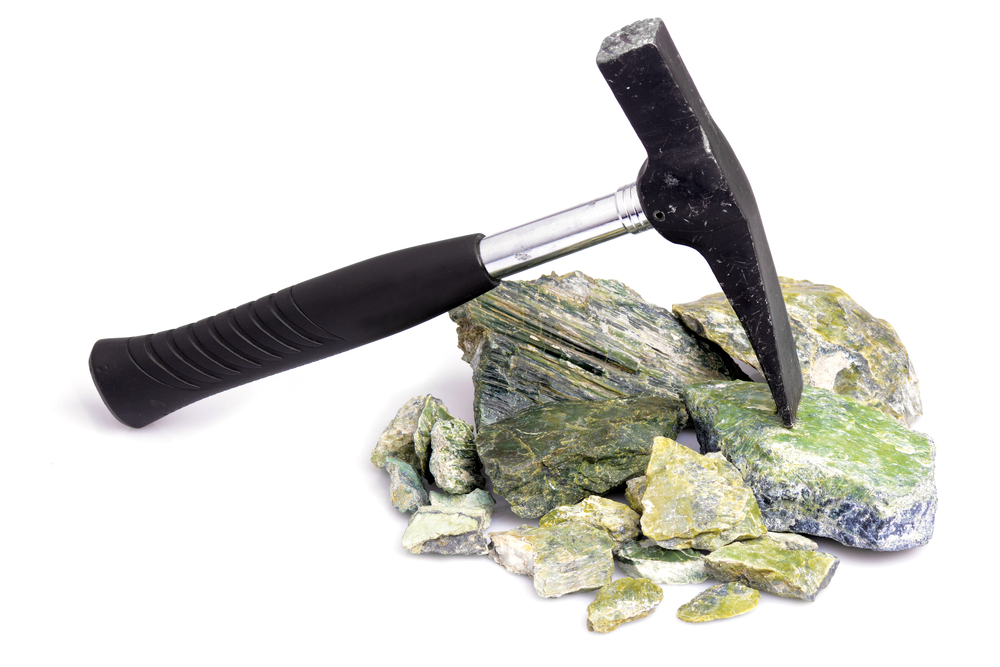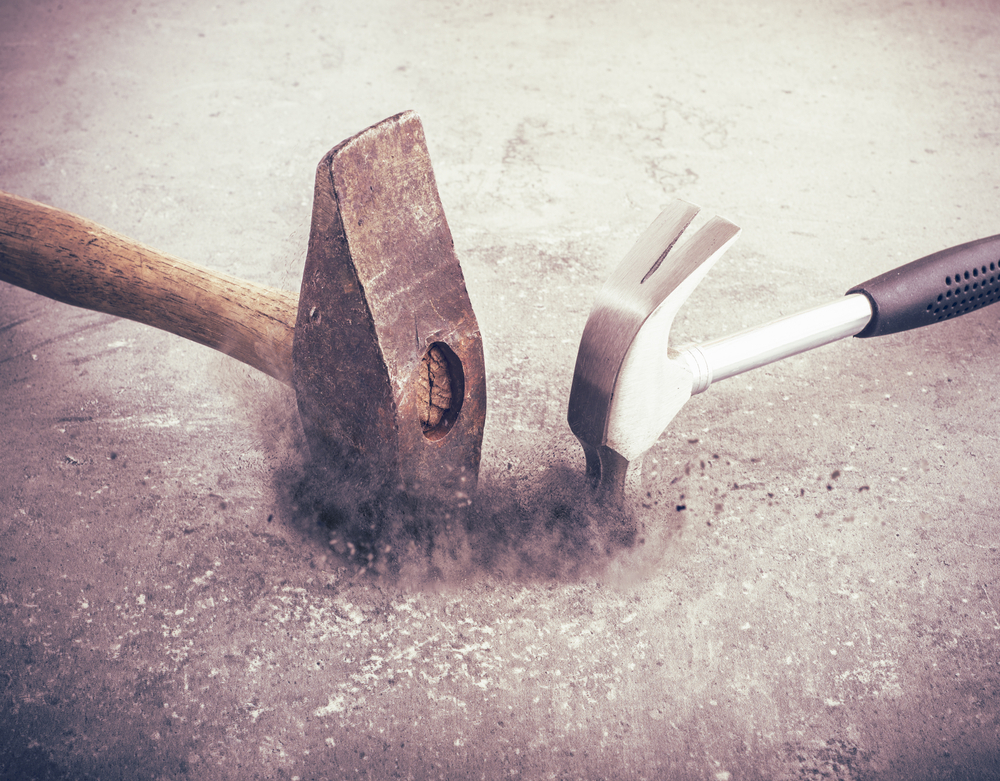The Ultimate Rock Hammers Guide for Rockhounding Enthusiasts
Click here to see our crystal hunting maps
The right tool makes all the difference, and this is especially true when working with rocks. From delicate fossil extraction to heavy-duty demolition, geologists, and rockhounds all rely on specialized rock hammers to get the job done.
Rock hammers are indispensable tools for rockhounds. These specialized tools are not only used for breaking and collecting rock samples but also serve as a badge of honor among enthusiasts. Their importance in geology and rockhounding cannot be overstated, as they allow for the careful collection and examination of geological specimens.
This article explores the various types of rock hammers available, their specific uses, and how to choose the right one for your needs.
The Anatomy of a Rock Hammer
Understanding the anatomy of a rock hammer is crucial for its effective use. The head is the main striking part, designed to deliver force to a small area. The handle acts as a lever, allowing the rockhound to apply a greater force to the head. The material composition often includes steel for the head for its impact resistance and a comfortable material for the handle to absorb vibrations.
Types of Rock Hammers
Geologists and fossil hunters primarily use two types of rock hammers:
-
Geologist's Hammer
This versatile tool comes in two sub-types:
- Rock Pick: This features a pointed steel tip on one end for breaking rock and prying at fractures. The flat face on the other end serves for hammering chisels or pounding rock surfaces.
- Flat Face Hammer: This version has a flat face on both ends, ideal for striking chisels or gently breaking small rock samples.
-
Masonry Hammer
Often confused with a brick hammer, the masonry hammer boasts a pointed chisel on one side for breaking apart concrete, stones, and bricks. The flat face on the other end allows for light chiseling tasks. Both geologist's hammers and masonry hammers are typically constructed from forged steel for strength and have a medium weight (1-4 lbs) for user control.
Other Types of Common Rock Hammers Among Rockhounds
-
Hand Hammer
The hand hammer is the quintessential tool for rockhounds. It's used to delicately break off samples from larger rocks and is small enough to carry on long treks.
-
Ball Peen Hammer
While not a traditional rockhounding tool, the ball peen hammer can be used to shape metals found during rockhounding excursions.
-
Sledge Hammer
This hammer is designed for more heavy-duty tasks like breaking larger rocks or driving chisels and steel wedges into rocks. The sledge hammer is the tool of choice for heavy-duty rockhounding activities.
-
Claw Hammer
The claw hammer may be used to remove nails from wooden crates or boxes during field trips, making it a versatile addition to a rockhound's toolkit.
-
Club Hammer
A club hammer is perfect for rockhounds when precision is needed in breaking rocks or driving chisels in confined spaces.
-
Dead Blow Hammer
The dead blow hammer is useful for rockhounds when they need to dislodge fossils or minerals without damaging them.
-
Tack Hammer
For delicate rockhounding tasks, such as splitting thin layers of rock, a tack hammer can be very useful.
-
Rock Hammer
The rock hammer, with its flat end for breaking and pointed end for prying, is specially designed for geological tasks and is a rockhound's best friend.

Other Specialized Rock Hammers
- Chisel-Head Hammer: The chisel-head hammer is perfect for rockhounds who need to split rocks along natural fissures.
- Brick Hammer: The brick hammer can be repurposed by rockhounds for carefully chipping away at rock faces to collect samples.
- Bushing Hammer: Rockhounds may use a bushing hammer to texture rocks for display or further examination.
- Crack Hammer: This tool resembles a geologist's hammer but with a pointed wedge replacing the pick end. It's used for splitting rocks along existing cracks or creating wedges for further breaking.
- Hammer Drill: This electric or battery-powered tool combines a hammering mechanism with a drill bit. It allows for efficient drilling into rock for construction projects, anchoring objects, or collecting core samples.
Choosing the Right Hammer for Rockhounding
Selecting the right rock hammer depends on several factors:
- Rock Size and Strength: For small, brittle rock samples, a geologist's hammer with a flat face is sufficient. However, larger or harder rocks might require a crack hammer or even a sledgehammer for initial breakage.
- Desired Outcome: Are you aiming to break a rock, split it along a seam, or drill a hole? Each task requires a different type of hammer.
- Personal Comfort and Safety: Choose a hammer weight and size that you can comfortably handle while maintaining proper form to avoid injury.
- Consider the weight of the hammer: A lighter hammer (1-2 lbs) is easier to maneuver for precise chipping, while a heavier one (2-3 lbs) might be better for breaking small to medium-sized rocks.
- Choose a hammer with a handle material that suits your preference: Rubberized grips offer better comfort and shock absorption, while wooden handles can provide a more traditional feel.
Safety Precautions When Using Rock Hammers
Safety should always be your top priority, so when working with hammers during your rockhounding adventures, ensure you're prioritizing the following:
- Eye Protection: Wear safety glasses to shield your eyes from flying debris.
- Hand Protection: Gloves protect your hands from blisters and impacts.
- Proper Technique: Maintain a steady stance with your feet shoulder-width apart and swing the hammer with controlled force.
- Be Aware of Surroundings: Watch out for falling rock pieces and keep others at a safe distance when using the hammer.
RELATED TOPIC: The Ultimate Guide to the Best Rockhounding Tools for Beginners
Maintaining and Care for Your Rock Hammer
Just like any faithful tool, your rock hammer deserves proper care to keep it functioning at its best. Here's how to show your hammer some love:
- Cleaning: After each use, wipe down the head and handle of your hammer with a damp cloth to remove dirt and debris. This prevents rust and keeps the grip clean.
- Lubrication: Some hammers, particularly those with automatic greasing systems, require regular lubrication. Consult your user manual for specific recommendations on grease type and frequency.
- Tighten Up: Over time, the constant hammering can loosen bolts and fittings. Regularly inspect your hammer for loose parts and tighten them using the appropriate wrenches according to the manufacturer's instructions.
- Sharpening (Pick-type hammers): The pointed pick end of a geologist's hammer can become dull with use. A sharpening stone or file can be used to restore its sharpness, but ensure you maintain the original angle for optimal performance.
- Storage: When not in use, store your rock hammer in a dry place away from moisture and extreme temperatures. Hanging it by the handle is a good option to prevent warping or damage.
Rock Hammer Recommendations for Rockhounding
When it comes to rockhounding, a comfortable and reliable hammer is key. Here are some popular brands to consider, keeping in mind ease of use, quality, durability, and cost:
- Estwing: A well-known brand offering a variety of geologist's hammers at affordable prices. Estwing hammers are known for their user-friendly design and good balance, making them ideal for beginners and casual rockhounds.
- Vaughan: Another established brand known for its quality and durability. Vaughan hammers might be slightly more expensive than Estwing models, but they offer excellent value for the money with features like forged steel construction and comfortable grips.
- Glorousamc: Glorousamc hammers cater to the budget-conscious rockhound. While they might not be the most durable option for heavy-duty use, they are perfectly suitable for casual collecting and offer a lightweight design for easy handling.
Remember, the best rock hammer is the one that feels comfortable in your hand and allows you to work efficiently. With proper care and the right tool for the job, your rockhounding adventures will be filled with successful rock discoveries!
Conclusion
Rock hammers are one of the most trusted tools in a rockhound's toolkits. Understanding the different types and their specific uses is essential for anyone interested in rockhounding. With the right hammer, you can safely and effectively explore the world of rocks and minerals.
Remember, proper care and storage of your rock hammer will extend its lifespan and keep it performing optimally for years to come.
